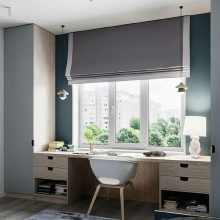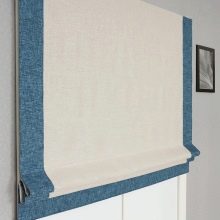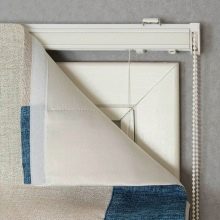What is a dimout and what curtains are made of fabric?

It is very important for those choosing different materials to figure out what it is - dimout fabric, what roller blinds are made of such material. We'll have to study the differences between it and blackout and learn how to choose the best curtain. You also need to pay attention to the properties of dimout curtain fabric.

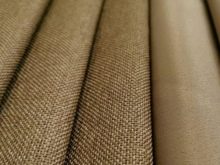
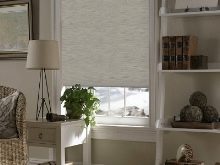
What it is?
From the very beginning, it should be pointed out that dimout fabric is a classic curtain fabric. It is sewn like a three-layer fabric. These textile products are based on polyester fibers. They are woven using the double satin weaving method. No additional processing is required. A characteristic feature of the dimout is the transmission of scattered light rays during the daytime.
With the onset of night, this fabric will guarantee total blackout. Outwardly, it is easy to confuse such matter with melange. There is only one drawback - the multilayer structure does not allow you to get a clean color, and the inner areas will still be visible from the outside, even with ideal quality.
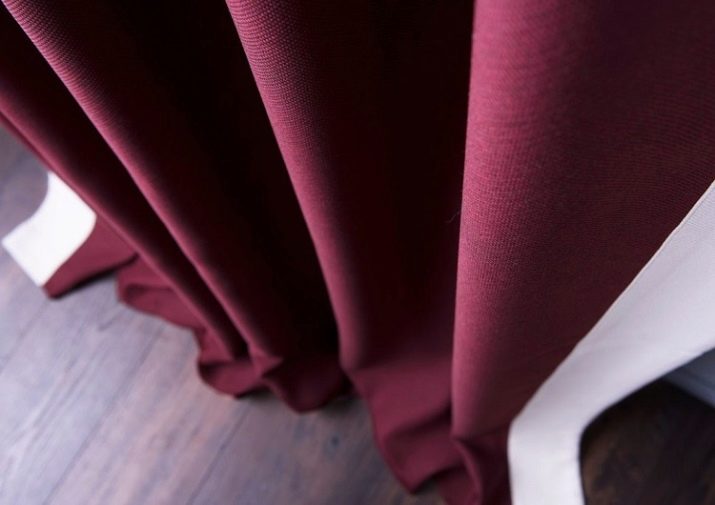
Interior fabrics, impervious to light, were first used in the Scandinavian countries. There, the period of white nights covers the end of spring and all summer. However, gradually such matter was appreciated at its true worth in different states. It really provides the comfort of sleeping and resting in the intense light outside.
The need for it arises if the bright sun during the day, a lantern, a billboard or street lights at night is worried. It is worth using dimout curtains both on white nights and on a polar day. They will also come in handy when a long summer day interferes with your normal life and work schedule. That is, for daytime sleep and other cases in which twilight should reign in the room.
Dimout is also bought if the reflections from the screens of consumer electronics create inconvenience, but you cannot rearrange the equipment or change its operating mode.
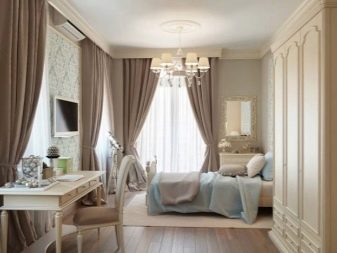
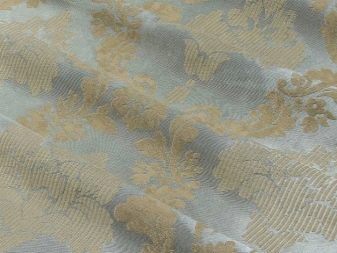
Finally, light protection will be in demand in a number of cases in:
- cafes and restaurants;
- educational institutions;
- office centers;
- hotels;
- medical institutions, sanatoriums;
- hostels;
- administrative structures;
- cinemas;
- spa salons;
- museums, libraries, archives and art galleries;
- conference rooms.
More and more often, it is not ordinary polyester that has been taken as a basis, but modified polyester. This fiber is called PES FR. It is additionally treated with fire retardants. The release technology is relatively simple and low cost. Dark types of dimout look richer due to black threads.

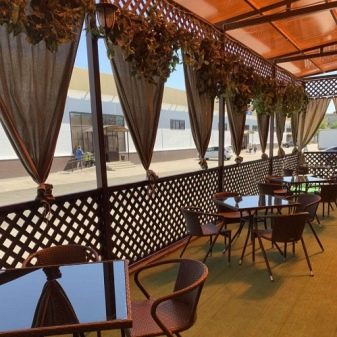
Basic properties
In the production of dimout, light-retarding threads are used. They are coal black in color. The covering of such fibers is provided by weaving according to the satin pattern. Closing the black base at 100%, as already mentioned, does not work. And therefore, even a white dimout without additional staining actually has an off-white tint, and not a pure verified color. From the reverse side, the matter predominantly looks the same as on the front surface. However, the specificity of satin weaving makes itself felt - it is always different on the outer and inner surfaces. Dimout does not include a reflective acrylic layer. Light blocking occurs, depending on the specific specimen and the conditions of its use, by 65-90%. Both sides of this fabric have a decorative function.
The efficiency of absorption of waves in the optical range is provided by a light filter. Or, in other words, the same black thread. The surface of a dimout is:
- satin (completely smooth);
- linen;
- jacquard look.

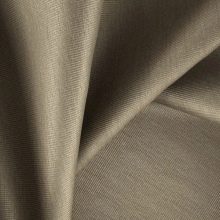
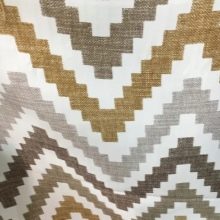
Such matter is available in light and dark colors. It is easy to machine wash and does not deteriorate excessively. In the process of everyday use, the dimout also wears out little. It is curious that the term itself, like this fabric, appeared at the end of World War and immediately after it, when strict rules on blackout were canceled. Modern dimout:
- quite aesthetic;
- safe for human health and the environment;
- possesses fire retardant properties;
- serves for a long time;
- mechanically strong;
- does not cause difficulties in leaving.
Taken together, all these properties just make such a fabric ideal for curtains and other curtains. In a number of descriptions, attention is focused on the absence of pronounced differences between the front side and the wrong side. The dimout is pleasant to the touch. This fabric is durable. It will be bright and will not fade for a long time, retaining its appearance for decades in a row.
Resistance to deformation is high enough for systematic washing in automatic machines; also note the containment of the spread of heat and extraneous noise.
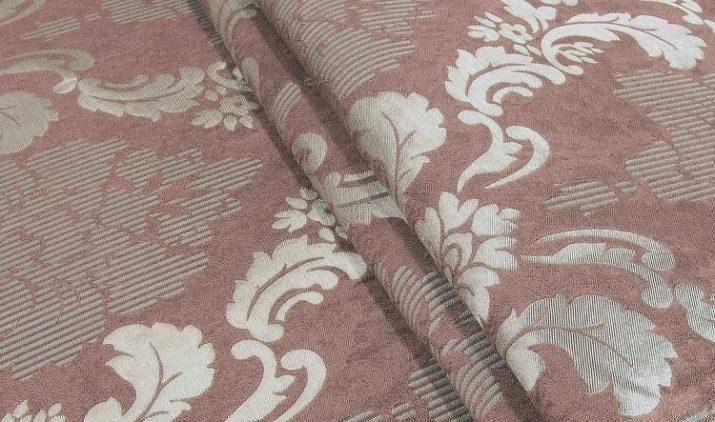
Comparison with blackout
The difference is, first of all, that the blackout is not a simple dimout, but reinforced with acrylic foam. This white substance reflects light much more actively. Acrylic allows you to hold the layers together. It forms a reflective surface on the back of the fabric. The difference is that blackout, as opposed to dimout, happens not only with 3, but also with 2 layers. The two-layer version is thinner and not so heavy. In many cases, it becomes a lining. From the point of view of light protection, heat containment and extraneous noise, the three-layer type of blackout is better. One of the layers (outer) looks out the window, and it is he who has a white color.
In the middle there is traditionally black polyester fiber. It is precisely it that does not allow excess light rays to pass through. The outer shell, looking inside the room, solves primarily a decorative problem. Since all the layers are connected by acrylic, as a result, the blackout has a higher light absorption, reaching almost 100%. The blackout itself, as a rule, has no pattern and is often painted in dark colors.
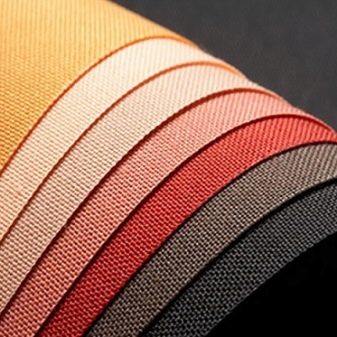
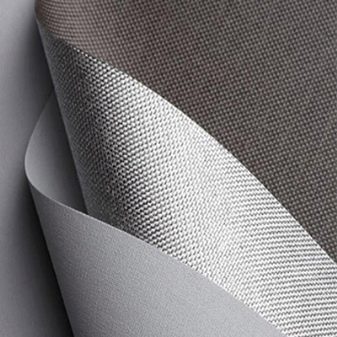
It drapes easily. Soft folds form on the surface of the fabric. Reinforced and very dense structure guarantees better than dimout protection against heat leakage, from heat and from extraneous sounds. Burnout in the sun and mechanical deformation are excluded. The service life of the matter turns out to be much longer. Some of the blackouts may include flax strands. This additionally increases the strength of the product. However, the dimout wins in crush resistance. And it will be much easier to smooth it out.
True, if dimout delays up to 95%, and then in exceptional cases, according to advertising materials, then blackout is much better suited for complete blackout and blackout.
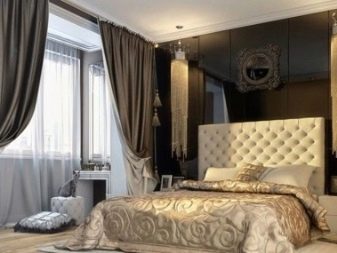
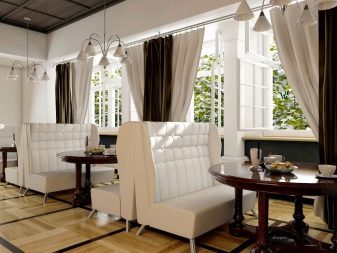
It is believed that dimout is able to completely block the rays of light from various types of electric lamps. But when illuminated by the sun, it only scatters the incoming waves. As a result, the room will be filled with soft light that is pleasing to the eye. Both fabrics can be of the same color. Also, both of them are typical:
- printed drawing;
- jacquard pattern;
- smooth surface layer of satin appearance;
- matte surface appearance;
- linen texture.
Do not confuse 3-layer dimout with blackout. It has a complex weaving, and even if it is often performed according to a satin pattern, but not always. The peculiarity of the fabric is clearly visible on its cut. The limited (weaker) absorption of light by the dimout is partially compensated by an increase in the density of folds and draperies. Bright and simply light dimout options are characterized by a gray-beige color, in contrast to rich dark options.
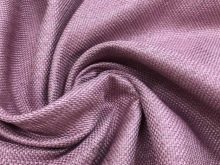
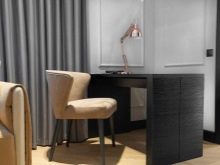

Application
As already indicated, such a fabric is suitable for providing comfort and a cozy atmosphere in any private homes, apartments and public buildings. The curtains sewn from it are distinguished by really effective protection from bright sunlight. And even a limited degree of it does not impair the sensation, it allows you to create an optimal atmosphere. Traditional curtain fabrics are sewn from dimout. They not only contain the spread of too bright light, but also improve the design of the room.
Japanese curtains are an alternative. Visually, they look like a regular flat canvas. On Japanese curtains, transverse strips are attached. When the canvas rises, even folds are formed, resembling waves. Japanese curtains are similar in structure to sectional blinds. Each of their models, however, is made in the original color scheme.
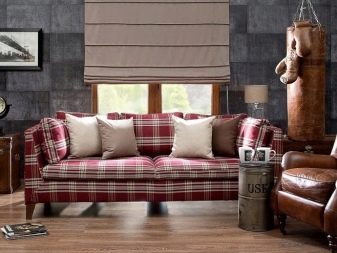

Control is realized with cords and chains. A weighting strip is inserted into the lower strip. The decor should be simple and unobtrusive. Variations in color or texture are allowed. Roman blinds from dimout are also not uncommon. They, like the Japanese ones, have a minimalist design. However, they visually differ from them and have a special look.
The most unsightly view is well hidden behind Roman blinds. There is also a frameless modification of such curtains (with characteristic "ears"). And on the basis of dimout, pleats are made. In fact, these are curtains, the folds on which are placed horizontally. Controlling the shading of a room is easy. A well thought-out mechanism is intended for this.
It is also worth mentioning roller blinds, which have a particularly high material density.
